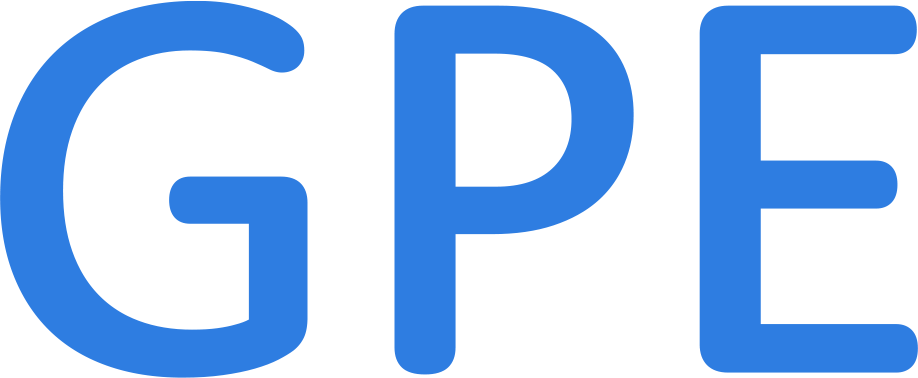


G_Great
P_Performance
E_Engineering
G_Great
Stable assembly of the entire trolley system thanks to the perfect interaction of the wide variety of materials and component tolerances.P_Performance
Development of the production-ready metal design of the trolley chassis – foundation of the anaesthesia equipment. Thanks to its fractal manufacturing structures, GPE can also respond to sudden increases in customer demand in emergencies and play its part in improving the safety and quality of professional patient care and protecting human lives.E_Engineering
Unparalleled development and manufacturing expertise in metalworking.Anaesthesia equipment trolley chassis
What GPE puts on its feet plays a supporting role in the operating room.
The perfect foundation for the complete assembly of the entire trolley system thanks to ‘Great Performance Engineering’ – the chassis for anaesthesia machines meets the tightest tolerance specifications, thus minimising deviations in further assembly and ensuring the desired quality. To this end, a well-engineered and stable production process was developed with the customer in which GPE’s unique metalworking expertise plays a key role.
The Task
A trusted advisor to the customer during the development of a new anaesthesia machine: in close collaboration between the customer and the project teams, GPE was tasked with overseeing and implementing the developments and planned product improvements.
The Challenges
In this project, the customer was particularly interested in GPE’s metal expertise, specifically advice on an optimal metalworking production concept and technology solution.
As part of a tightly organised project with the customer, GPE tested a wide range of materials and production technologies and defined these according to their optimum feasibility for subsequent mass production. A central requirement was designing under application of the geometric dimensioning and tolerancing guidelines specified in the prevailing metalworking standards.
This resulted in specific challenges with respect to the welded design – the components of the chassis are laser-cut from 3 to 4 mm thick sheet steel panels, deburred and edged. The castor mountings for the Steinco castors mounted during a later step are cut and milled from tubes and welded by means of robotic welding to the tightest tolerances. The customer specified a tolerance of ±0.8 mm with a distance of 650 mm between the castor mountings and a parallelism of 0.5 mm between the individual parts. The scope of the project also included surface finishing after welding the entire assembly to prevent rust formation (pickling, electrogalvanisation).
As part of a tightly organised project with the customer, GPE tested a wide range of materials and production technologies and defined these according to their optimum feasibility for subsequent mass production. A central requirement was designing under application of the geometric dimensioning and tolerancing guidelines specified in the prevailing metalworking standards.
This resulted in specific challenges with respect to the welded design – the components of the chassis are laser-cut from 3 to 4 mm thick sheet steel panels, deburred and edged. The castor mountings for the Steinco castors mounted during a later step are cut and milled from tubes and welded by means of robotic welding to the tightest tolerances. The customer specified a tolerance of ±0.8 mm with a distance of 650 mm between the castor mountings and a parallelism of 0.5 mm between the individual parts. The scope of the project also included surface finishing after welding the entire assembly to prevent rust formation (pickling, electrogalvanisation).
The Solution
GPE developed the production-ready metal design of the chassis – and thus the foundation on which the use of the later anaesthesia machines is based. The welded design was conceived with design-to-cost and design-to-manufacturing aspects in mind. When designing the chassis in a manner optimised for production using metal, subsequent steps such as the assembly of the backbone were taken into account.
A state-of-the-art press brake with bending angle monitoring (ACB) in combination with a bending robot ensures the accuracy of the edging process – this minimises errors in the initial stages of production and ensures the desired level of quality is achieved. During robot welding of the individual parts, special retaining jigs are used to counteract the distortion during welding resulting from the process. GPE designed these specifically for this project in accordance with customer requirements and the applicable tolerances and standards.
A state-of-the-art press brake with bending angle monitoring (ACB) in combination with a bending robot ensures the accuracy of the edging process – this minimises errors in the initial stages of production and ensures the desired level of quality is achieved. During robot welding of the individual parts, special retaining jigs are used to counteract the distortion during welding resulting from the process. GPE designed these specifically for this project in accordance with customer requirements and the applicable tolerances and standards.
The Added Value
In close collaboration with the customer, GPE developed and defined well-engineered and stable manufacturing processes. GPE handles the process of managing the suppliers of purchased parts, including smart scheduling, and takes care of downstream processes in the further finishing of the welded assembly with short logistics routes with certified suppliers who can process and galvanise components of this size.
The customer achieves maximum engineering value with respect to the system assembly of the entire carriage (chassis), because in this case the most important aspect is the interaction of the wide variety of materials and component tolerances in each drawing. If the chassis is not within tolerance (straight, horizontal), dimensional deviations from the backbone (extruded aluminium profile) and with regard to the further assembly of mounted parts such as the two tables (die-cast aluminium parts) increase. These are aligned centrally to the backbone using our own assembly jig. CAQ-controlled documentation is carried out for all components and production steps up to the final inspection (including high-voltage testing). Each chassis is assigned a serial number, which enables all of the materials used to be traced. GPE delivers the quantities required by the customer in a highly responsive manner to its VMI warehouse. The fractal structures in the assembly lines enable us to respond quickly to fluctuations in customer orders, for example as a result of the coronavirus pandemic.
The customer achieves maximum engineering value with respect to the system assembly of the entire carriage (chassis), because in this case the most important aspect is the interaction of the wide variety of materials and component tolerances in each drawing. If the chassis is not within tolerance (straight, horizontal), dimensional deviations from the backbone (extruded aluminium profile) and with regard to the further assembly of mounted parts such as the two tables (die-cast aluminium parts) increase. These are aligned centrally to the backbone using our own assembly jig. CAQ-controlled documentation is carried out for all components and production steps up to the final inspection (including high-voltage testing). Each chassis is assigned a serial number, which enables all of the materials used to be traced. GPE delivers the quantities required by the customer in a highly responsive manner to its VMI warehouse. The fractal structures in the assembly lines enable us to respond quickly to fluctuations in customer orders, for example as a result of the coronavirus pandemic.



